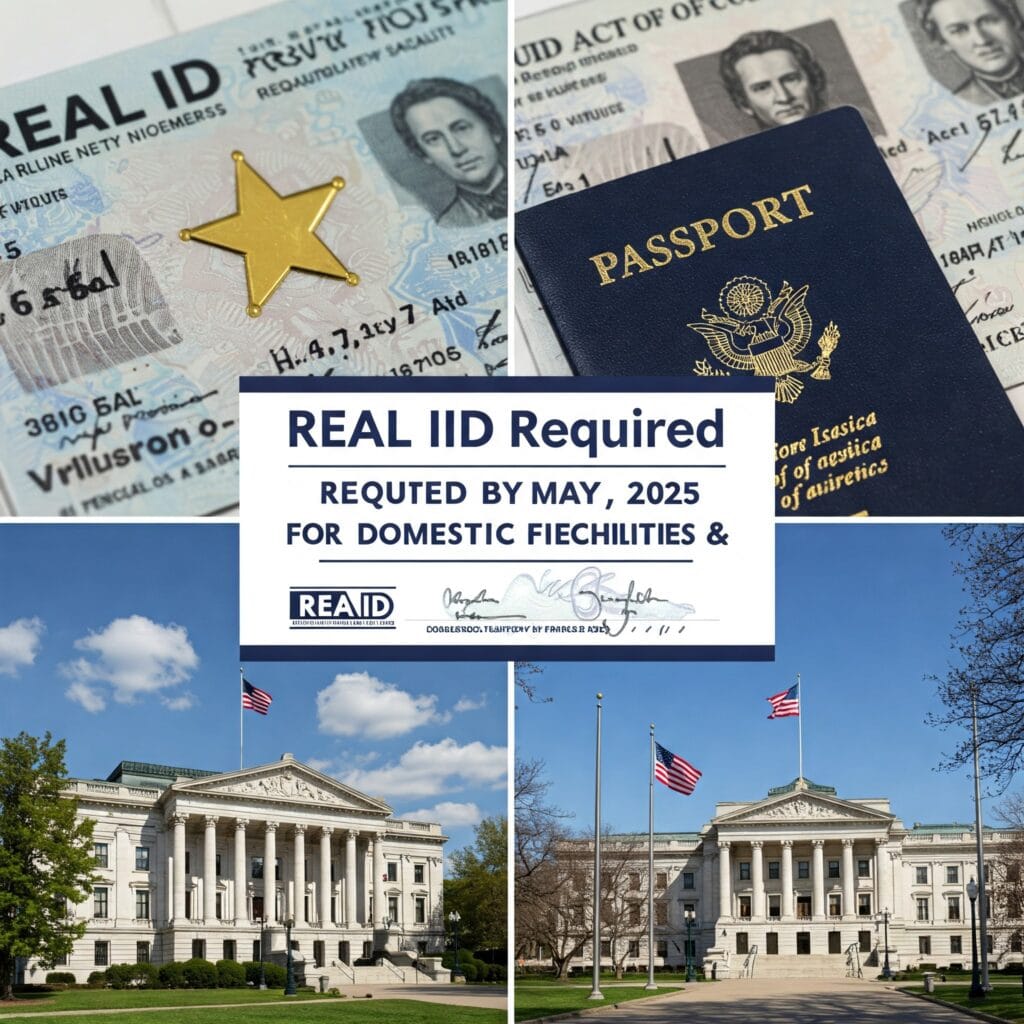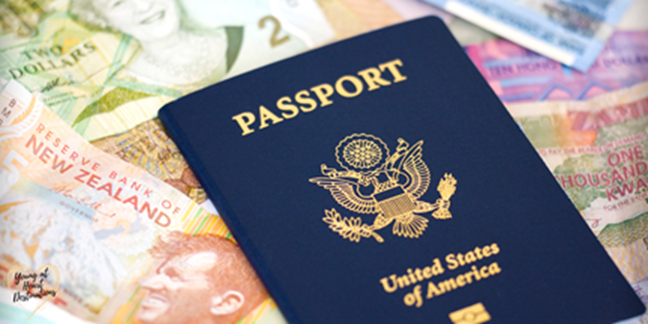
The REAL ID Act, passed by Congress in 2005 in response to the 9/11 Commission’s recommendation to establish minimum security standards for state-issued identification documents, is poised to significantly impact domestic travel within the United States. After numerous delays, the full enforcement date is set for May 7, 2025. This means that a standard state-issued driver’s license or identification card will no longer be sufficient to board federally regulated commercial aircraft or access certain federal facilities. Understanding who needs a REAL ID and the acceptable alternatives is crucial for avoiding travel disruptions and ensuring seamless movement within the country.
The Core Requirement: Boarding Domestic Flights and Accessing Federal Facilities
The primary impetus behind the REAL ID Act is to enhance national security by making it more difficult for individuals to fraudulently obtain identification documents. Starting May 7, 2025, every air traveler aged 18 and older will need to present a REAL ID-compliant driver’s license or state-issued identification card, or another acceptable form of federal identification, to pass through Transportation Security Administration (TSA) checkpoints for domestic flights. Similarly, a REAL ID or an acceptable alternative will be required to access certain federal facilities, including military bases and nuclear power plants.
Who Absolutely Needs a REAL ID (or an Acceptable Alternative)?
The following individuals will need a REAL ID-compliant document or an acceptable alternative for domestic air travel and access to federal facilities beginning May 7, 2025:
- All Adults (18 years and older) Flying Domestically: This is the most significant impact of the REAL ID enforcement. Any adult attempting to board a commercial flight within the United States will be required to present compliant identification.
- Individuals Accessing Secure Federal Facilities: This includes those visiting military bases, federal courthouses, nuclear power plants, and other federally controlled areas that mandate REAL ID compliance for entry.
How to Identify a REAL ID-Compliant Document:
REAL ID-compliant driver’s licenses and identification cards are visually distinguishable from standard state-issued IDs. They typically feature a star marking in the upper portion of the card. The specific appearance and location of the star may vary slightly depending on the state, but its presence indicates compliance with federal REAL ID standards. Some states also issue Enhanced Driver’s Licenses (EDLs), which are also acceptable alternatives to REAL ID and often feature a U.S. flag.
Acceptable Alternatives to a REAL ID:
It’s important to note that a REAL ID-compliant driver’s license or identification card is not the only acceptable form of identification for domestic air travel and federal facility access. The TSA and other federal agencies will accept several other forms of valid identification, including:
- U.S. Passport: A valid U.S. passport book or passport card is a universally accepted form of identification for both domestic and international travel and meets REAL ID requirements.
- U.S. Passport Card: While not valid for international air travel, the U.S. passport card is acceptable for domestic flights and entry into federal facilities.
- DHS Trusted Traveler Cards (Global Entry, NEXUS, SENTRI, FAST): These cards, issued by the Department of Homeland Security (DHS), are valid forms of identification.
- U.S. Military ID (including dependent IDs): Active duty and retired military personnel and their dependents can use their military IDs.
- Permanent Resident Card (Green Card): Lawful permanent residents can use their Green Cards.
- Border Crossing Card: This card is accepted for specific land border crossings and may be accepted for domestic air travel.
- Federally Recognized Tribal Nation/Indian Tribe-Issued Photo ID: Valid photo IDs issued by federally recognized tribal nations are acceptable.
- HSPD-12 PIV Card: This is a federal government employee identification card.
- Foreign Government-Issued Passport: While primarily for international travel, a valid foreign passport is also accepted for domestic air travel.
- Canadian Provincial Driver’s License or Indian and Northern Affairs Canada Card: These are accepted forms of identification for Canadian citizens.
- Transportation Worker Identification Credential (TWIC): This card is for workers in the maritime sector.
- U.S. Citizenship and Immigration Services Employment Authorization Card (I-766): This document is accepted.
- U.S. Merchant Mariner Credential: This credential is for U.S. mariners.
- Veteran Health Identification Card (VHIC): This card is issued by the Department of Veterans Affairs.
- State-Issued Enhanced Driver’s Licenses (EDLs): As mentioned, these licenses, currently issued by Michigan, Minnesota, New York, Vermont, and Washington, are acceptable alternatives.
Who May Not Immediately Need a REAL ID (But Should Plan to Obtain One)?
While the May 7, 2025, deadline is firm for adults, certain groups may not be immediately required to have a REAL ID or an acceptable alternative:
- Children Under 18: The TSA does not require children under the age of 18 to provide identification when traveling domestically with a companion. However, it is always advisable to check with the specific airline, as their policies may vary.
- Individuals Not Flying or Accessing Federal Facilities: If your travel plans do not involve boarding domestic flights or entering secure federal facilities, your standard state-issued driver’s license or identification card will still be valid for other purposes, such as driving, voting, banking, and accessing services that do not require federal identification.
Why Obtain a REAL ID Even if You Don’t Fly Frequently?
Even if you don’t have immediate plans to fly domestically or visit federal facilities, obtaining a REAL ID-compliant driver’s license or identification card is a prudent step for several reasons:
- Future Travel: You never know when unexpected travel needs might arise, and having a REAL ID will ensure you are prepared.
- Convenience: A REAL ID serves as a single, federally accepted form of identification for various purposes, potentially simplifying future interactions with federal agencies.
- Long-Term Validity: Once obtained, a REAL ID-compliant driver’s license or identification card is typically valid for the standard renewal period in your state.
- Potential for Broader Acceptance: While currently mandated for air travel and federal facilities, the security standards of REAL ID could potentially be adopted for other identification purposes in the future.
How to Obtain a REAL ID:
The process for obtaining a REAL ID-compliant driver’s license or identification card involves visiting your state’s Department of Motor Vehicles (DMV) or equivalent agency in person. You will need to provide documentation to prove your:
- Full Legal Name: This typically requires an original or certified copy of your birth certificate, a valid U.S. passport, or other acceptable legal documents.
- Date of Birth: Your birth certificate or passport usually serves as proof of date of birth.
- Social Security Number: You will generally need to present your Social Security card or a W-2 form.
- Two Proofs of Address of Principal Residence: Acceptable documents often include utility bills, bank statements, mortgage statements, or lease agreements.
- Lawful Status: U.S. citizens can typically prove this with their birth certificate or passport. Non-U.S. citizens will need to provide documentation of their lawful presence in the United States.
- Name Change Documents (if applicable): If your current name differs from the name on your birth certificate or other foundational documents, you will need to provide marriage certificates, divorce decrees, or court orders to demonstrate the legal name change.
It is crucial to check your state’s specific requirements on their DMV website before your visit, as the exact documentation needed can vary. Be prepared to present original documents or certified copies, as photocopies are often not accepted.
What Happens if You Don’t Have a REAL ID by May 7, 2025?
Starting May 7, 2025, if you are 18 years or older and attempt to board a domestic flight without a REAL ID-compliant driver’s license or identification card (and do not possess another acceptable form of federal identification, such as a U.S. passport), you will likely be denied boarding after the TSA checkpoint. Similarly, you may be denied entry to federal facilities that require REAL ID compliance.
While the TSA has indicated a potential for a phased enforcement approach, it is strongly recommended not to rely on this and to obtain a REAL ID or ensure you have another acceptable form of identification well before the deadline to avoid any travel disruptions.
Conclusion: Prepare Now for Seamless Travel
The REAL ID enforcement date is fast approaching, and understanding who needs this secure form of identification is paramount for all U.S. travelers. While a standard driver’s license has long been a common form of ID, its utility for federal purposes, particularly domestic air travel, will be significantly limited starting May 7, 2025. By taking the necessary steps to obtain a REAL ID-compliant driver’s license or identification card, or by ensuring you have another acceptable form of federal identification like a U.S. passport, you can ensure smooth and hassle-free travel within the United States and access to federal facilities. Don’t wait until the last minute – check your ID, understand your state’s requirements, and take action now to be REAL ID ready. Links to every state’s DMV can be found here.
Now that you know what you need to travel, find the best all-inclusive resort to travel to! Whether your destination is Jamaica, the Dominican Republic, or Mexico, we’ve got you covered.





